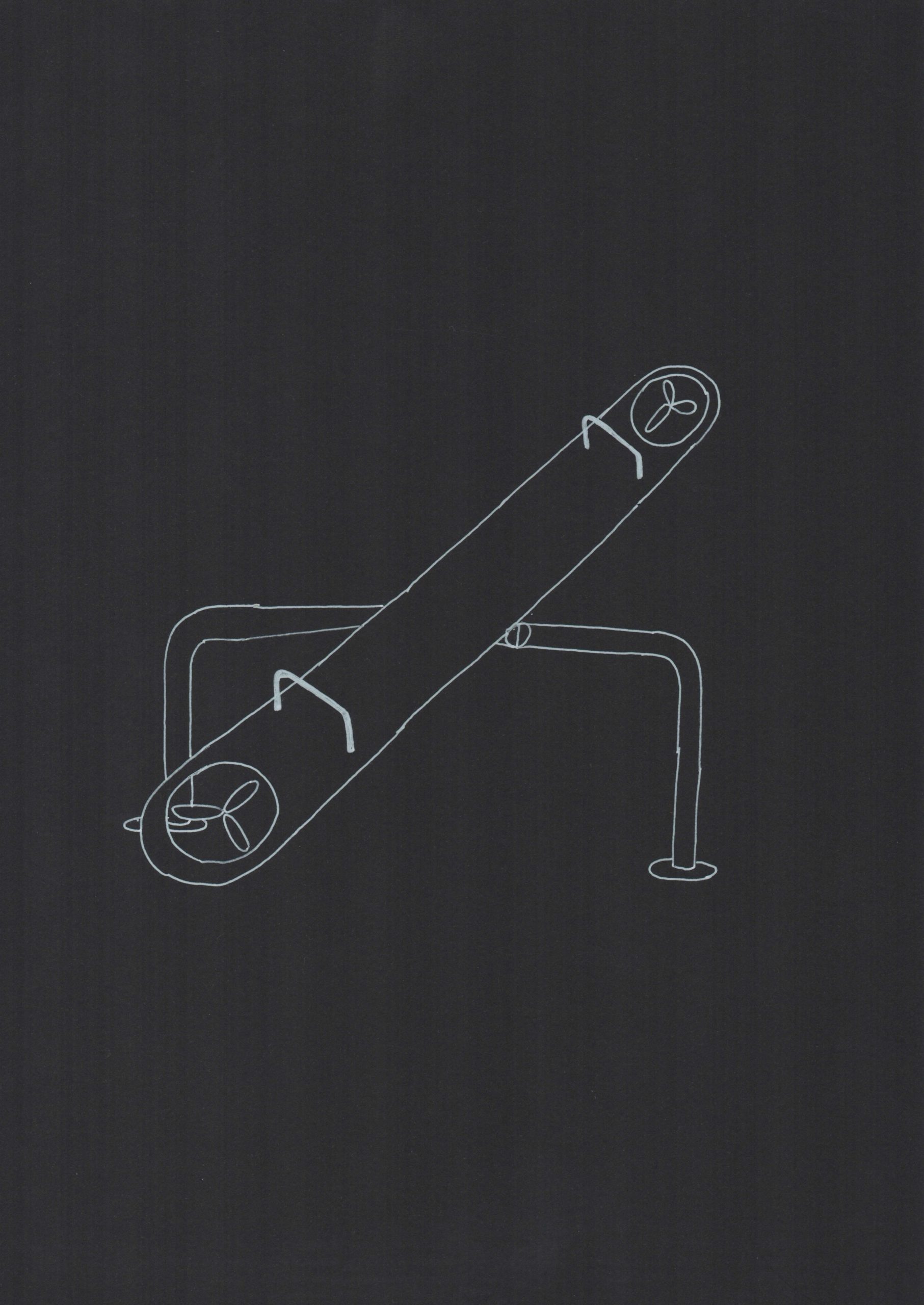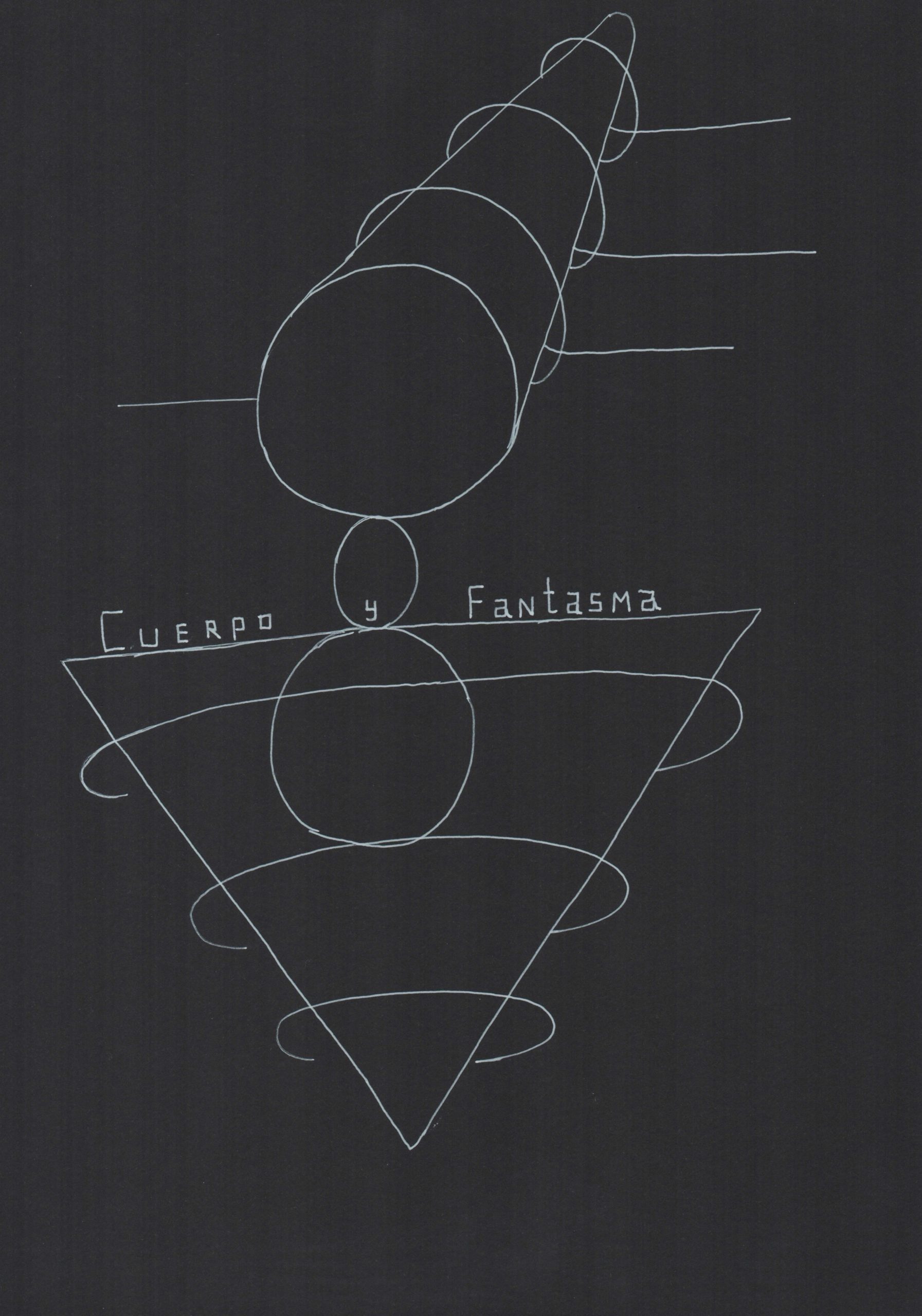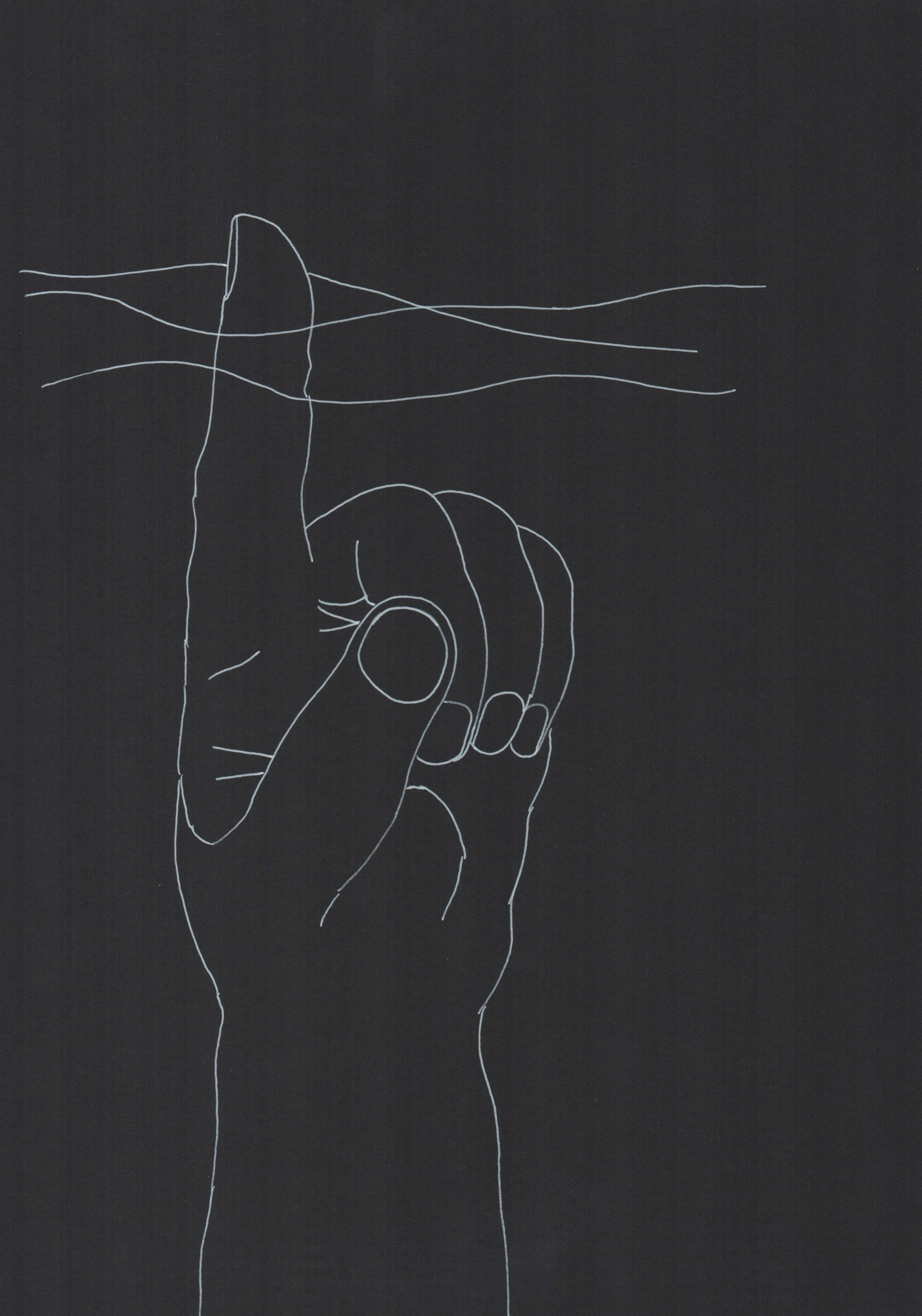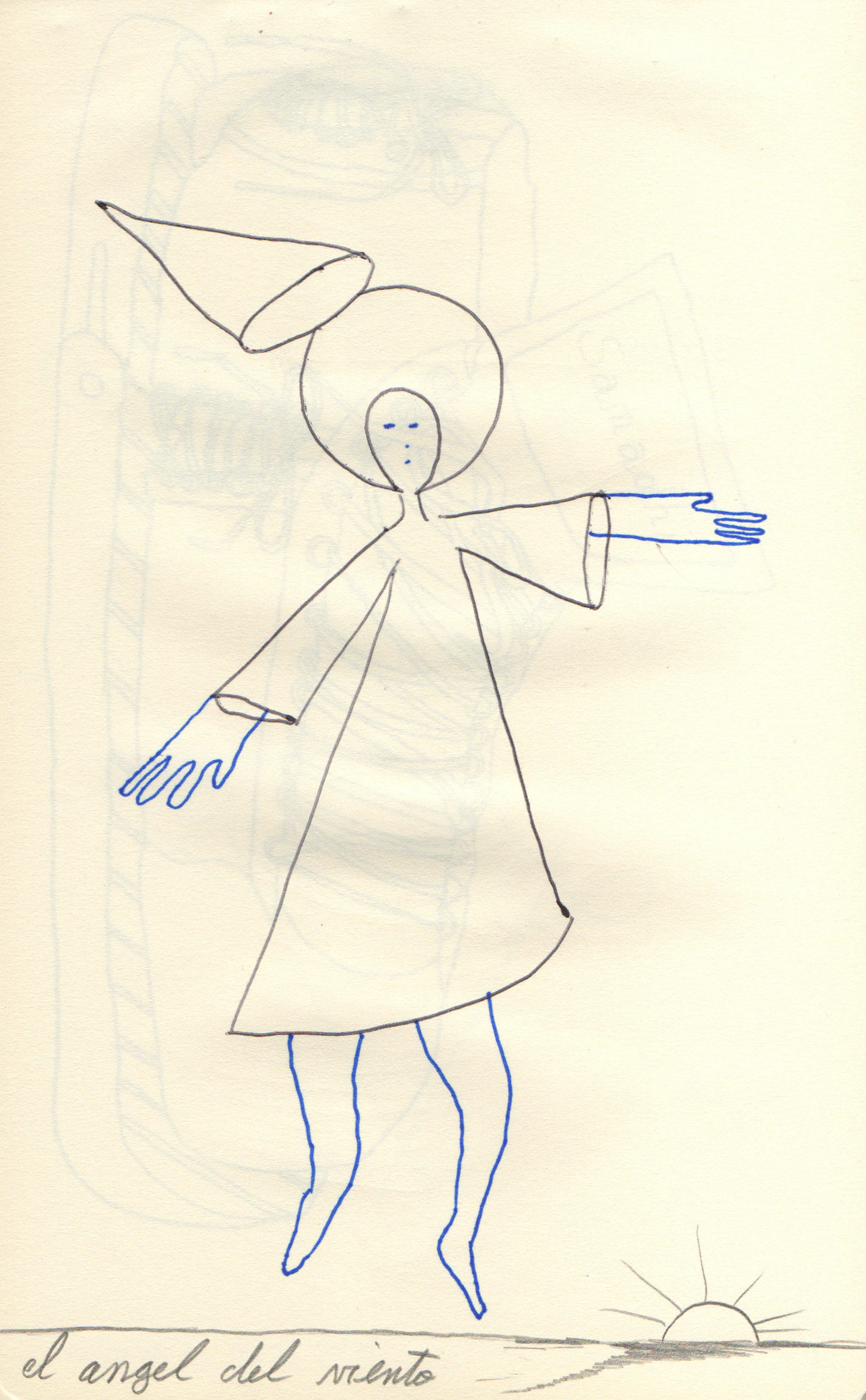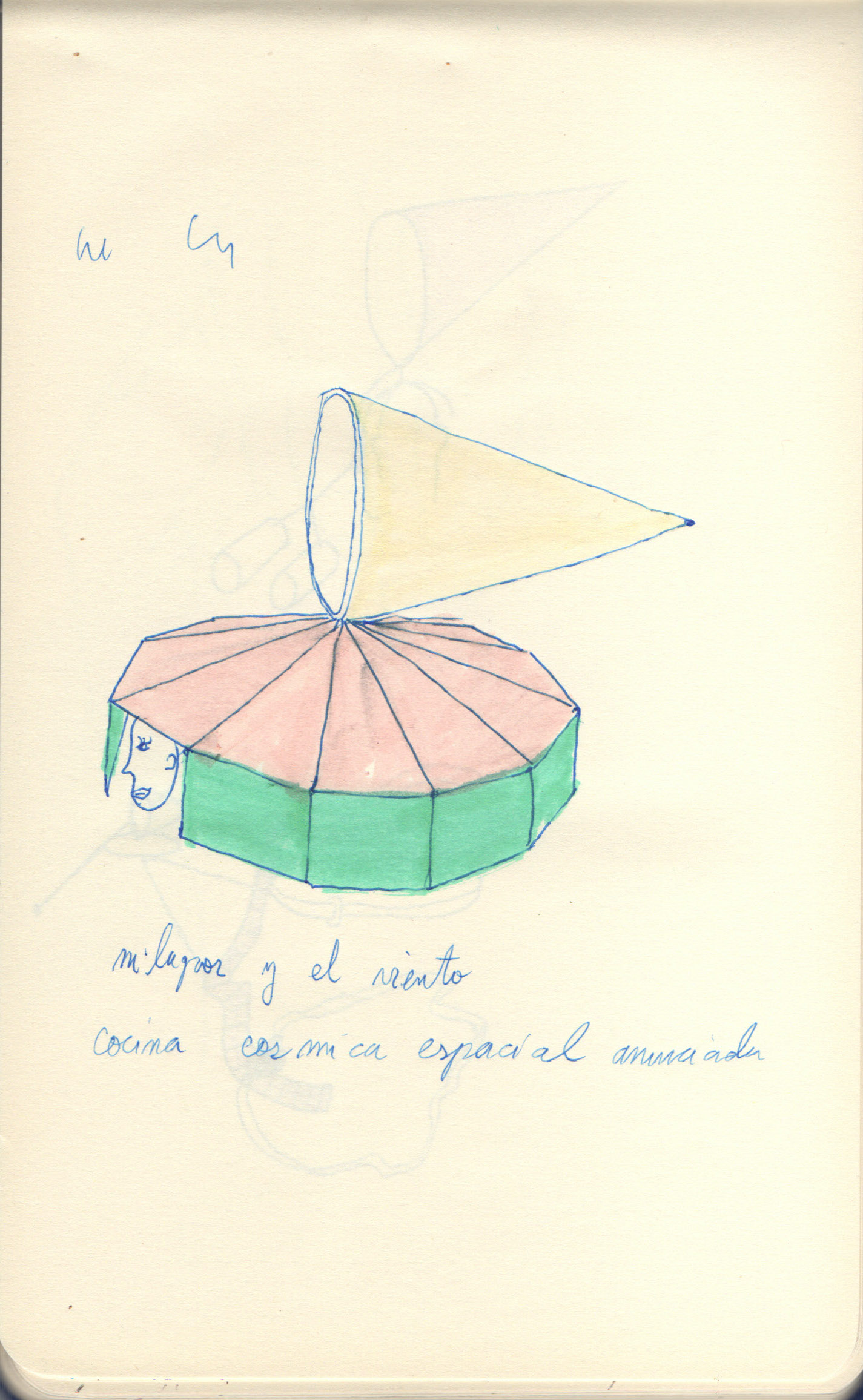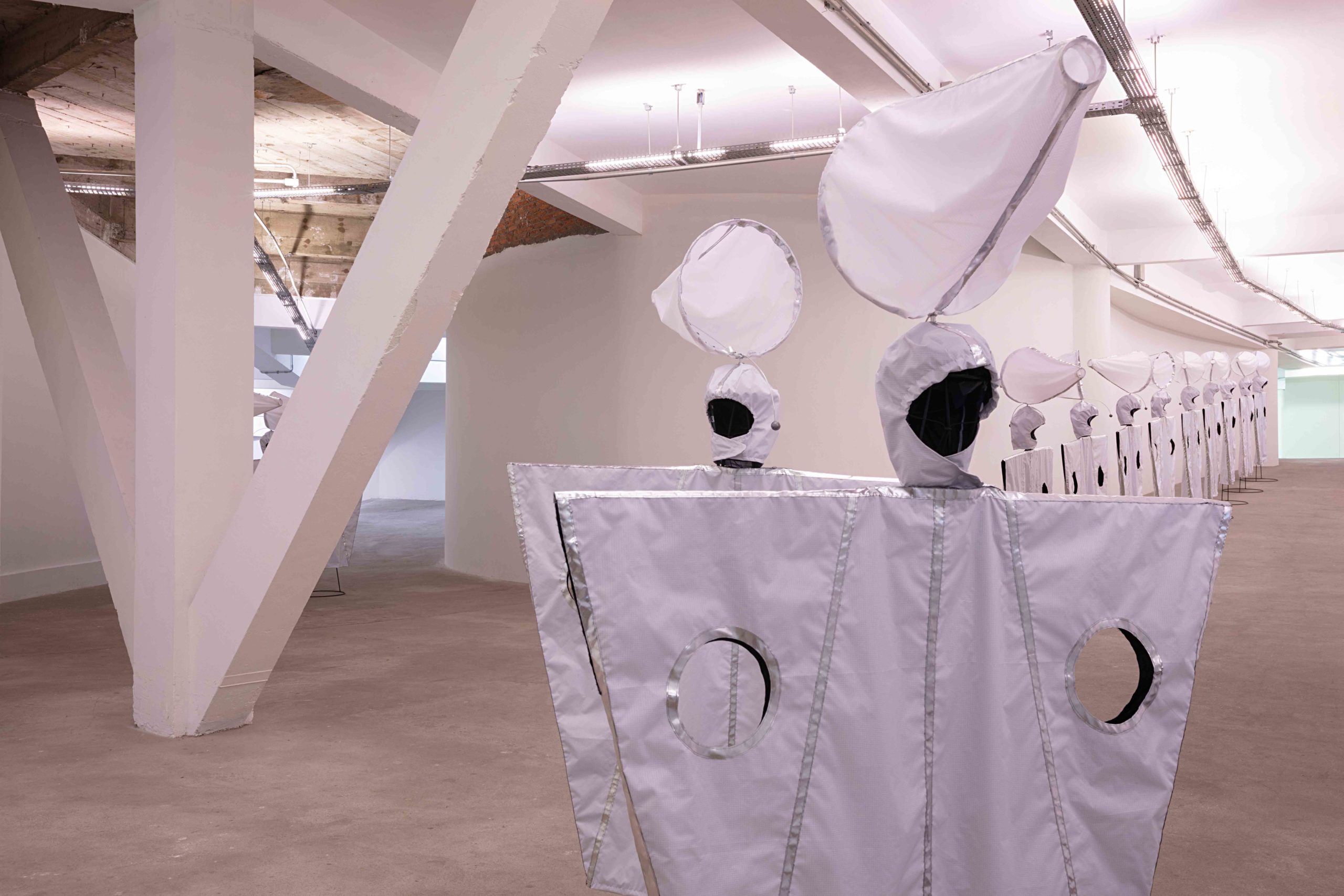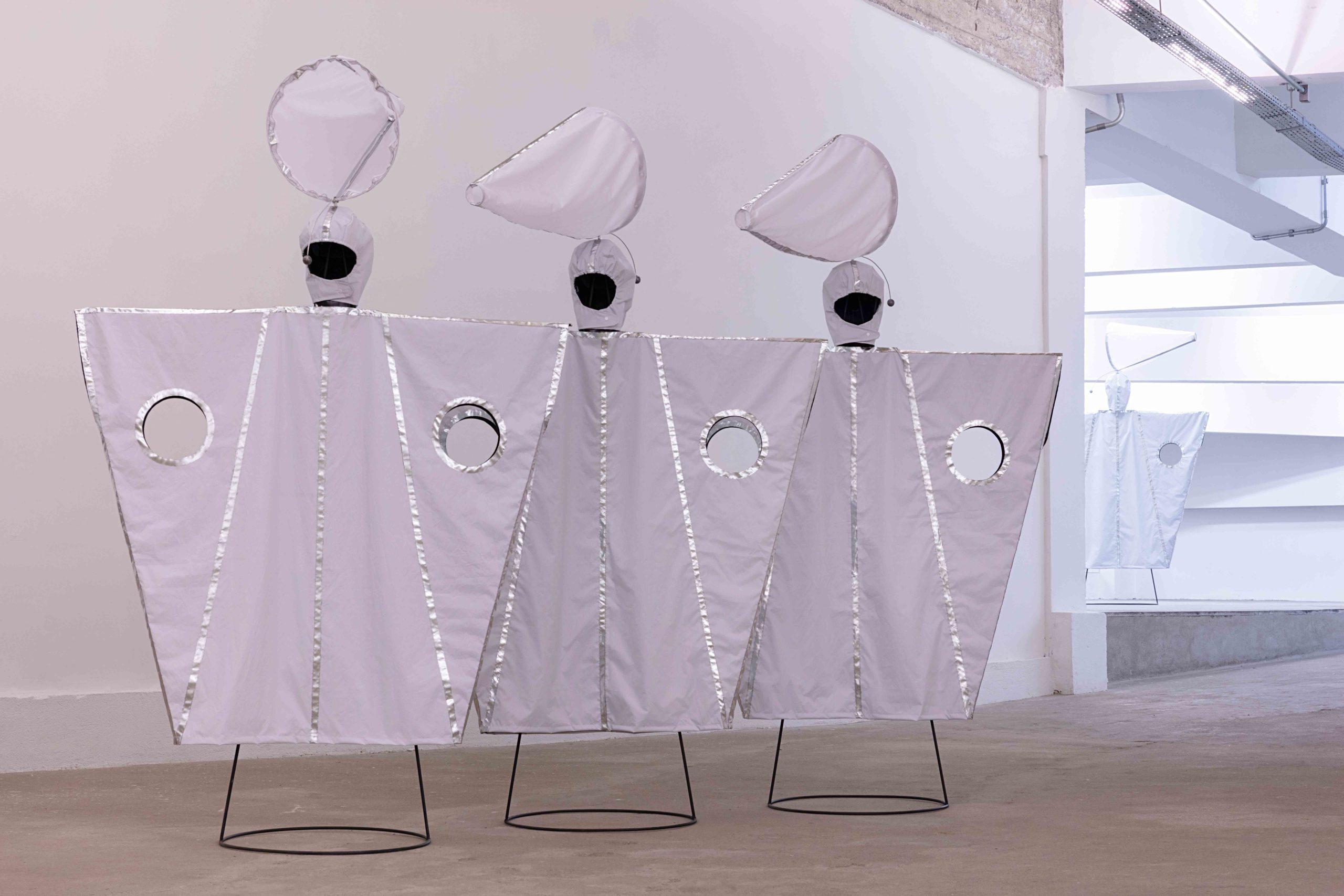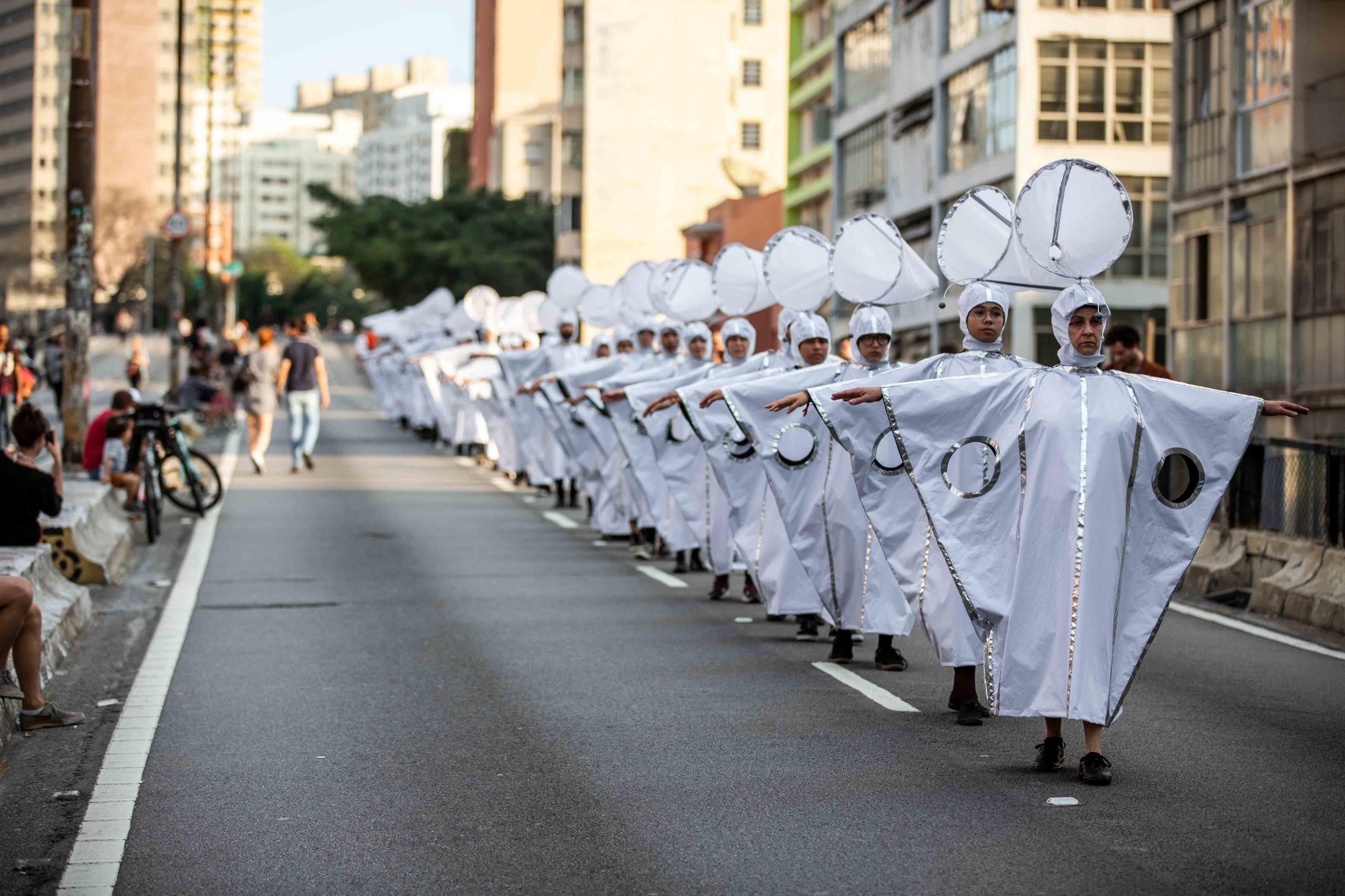instant weather prediction

PIVO
São Paulo, Brazil
Curated by Fernanda Brenner
2019
“This work is inspired by butterflies. I have always been fascinated by how butterflies navigate wind and how their entire physical nature floats submerged in the unpredictability of an invisible force. Butterflies have to instantly translate wind into movement, when I see butterflies I see a sort of sign language that enbodies wind”
Text by the artist
—–
Text written for the exhibition by Fernanda Brenner:
There are ever-present gusts of wind at Copan. I believe these are caused by the building’s S-shaped facade funnelling the wind into the many exposed entrances leading from the pedestrian street, and the open-plan ground floor. The strong winds often make it difficult to walk the corridors of the shopping gallery or to use the balconies in the building’s mezzanine. The Argentinian artist Eduardo Navarro visited the exhibition space at Pivô for the first time on a day of screaming winds.
Still today – in the highly computerised environment of pilots and air traffic controllers – a simple mechanical object is used to measure the direction and intensity of the wind: the windsock. The mechanism consists of a cone made of light fabric with openings on both sides. The larger side is attached to a metal ring, allowing the textile to follow the movement of air currents. The direct and fluid interaction between these objects and the wind is the inspiration behind the project Instant Weather Prediction, which has been commissioned by and exhibited for the first time at Pivô.
The exhibition was named after a book of the same title: a sort of seafaring manual that explains visual techniques to instantly predict the weather through a careful analysis of the movement of clouds. As well as Navarro’s obstinate observation of natural phenomena – the key methodology of empirical sciences – in his projects, the artist proposes to ‘inhabit’ his topics of interest, in this case: the wind. As such, he developed a meteorological suit that combines a type of helmet with a windsock attached and a cloak made of over-layered nylon and other light high-tech fabrics. The apparatus connects the body with the surrounding air.
The variations in wind currents impact the movement of those who wear the suit, producing either a harmonic interaction or a clash between the subject and the environment. In collaboration with ballet dancer and choreographer Zélia Monteiro, based in São Paulo, Navarro developed an inventory of movements to activate the suits, in which ballet dancers investigate their visual potential and technical efficiency. The activation takes place both collectively and individually, always in response and in relation to the wind currents inside and around Pivô. At the opening and closing of the show, the public is invited to watch the whimsical eolic-ballet conceived by the artist, performed by a group of dancers and ultimately choreographed by the wind.
When not in use, the thirty outfits are displayed at Pivô as a kind of meteorological station installation, where they are placed in a line of freestanding metal structures as if they were waiting for their meteorologist-dancers. The artist requested that the windows remained permanently open so the head-windsocks are always slightly moving according to the weather for the duration of the exhibition.
A prediction combines the reading of a set of indicial relations and some degree of speculation about something that is yet to happen. This type of conjectural language is an attempt to deal with – or perhaps attenuate our anxiety in relation to – life’s unpredictability. From Weather Channel bulletins to psychic readings, the willingness to predict the future is a mental habit and a daily practice in many cultures. Navarro is mostly interested in the arbitrariness of human efforts to circumscribe natural phenomena. His gaze turns to a type of interaction with nature that detracts from scientific reasoning and Cartesian thought. Despite the exhibition’s assertive title, the artist is not proposing to measure the speed of the wind or to understand the displacement of atmospheric gases, his emphasis is on the intangible aspect of wind: an imperious force that whistles melodies, upturns boats, moves birds and prevents us from lighting a cigarette.
For many years Eduardo Navarro has been investigating possible relations between science and art – drawing on magical and metaphysical narratives – to deconstruct normative contexts and propose new ways of relating to the environment through a sensorial, humored and uncanny approach. The artist questions any form of anthropocentric or utilitarian view of the world and always opts to freely turn into or inhabit other creatures, times and forms, like a sort of quantic shaman that dispenses with rituals. Copan’s wind currents are the main catalyst behind this exhibition. The ballet dancers revere the wind and wait for its instructions to move or not move in the space, whilst Navarro plays the role of an absurd oracle trying to somehow mediate the insidious relationship between moving air and bodies in the space. Shall we call the wind? Hopefully it will come and change the course of the ballet currently underway.


